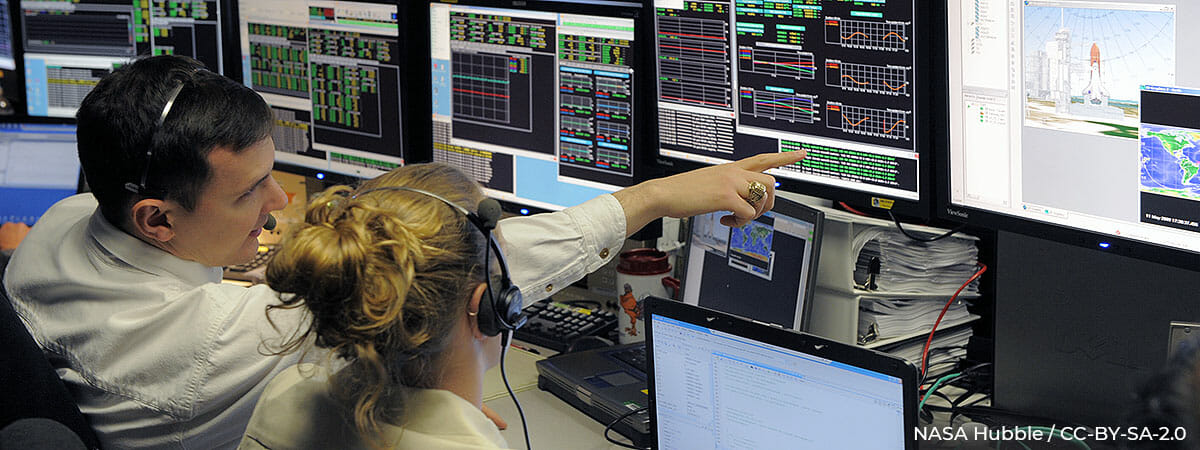The advancement of technology, the competition -but also collaboration- between space agencies and the emergence of private initiatives are improving exponentially the expectations of space travel. At present, we are able to keep satellites in orbit, land on icy comets, receive signals from a spacecraft located at the edge of the Solar System and even take anyone who can afford it to gaze at the darkness of outer space and the planet’s curvature. All these challenges are space missions.
Each spacecraft’s mission is an exercise in precision involving many fields of knowledge and where zero risk does not exist.
Before defining a space mission, we must first establish where space begins. Its delimitation has currently become a topic for controversy, because a series of tycoons, in what seems to be a race, are promoting their companies as pioneers of space tourism through marketing campaigns. Whichever the limit -at the thermosphere, 80 km, or at the Kármán line, 100 km-, a space mission is considered a flight aimed at achieving certain objectives beyond the boundary that divides our traditionally known world of a blue sky and space. It is a very broad definition that spans from a low orbiting satellite observing the Earth to the Voyager probes, which are on their way to other star systems, including the International Space Station or Space X’s launch of a sports car that is currently orbiting the Sun.
Space missions generally require a close collaboration between one or several space agencies and the industry, which share the complex tasks involved in the design, assembly and testing of the craft, as well as the so-called mission analysis. These are all pre-launch phases, except for the latter, which entails monitoring and making decisions over the course of the spacecraft’s life cycle.
We often ask ourselves how is it possible for spacecrafts to visit four outer planets and travel over 20,000 million km through space for 40 years, most of them with just a little fuel leftover? How can a large amount of satellites in the Earth’s gravitational environment coexist in a same area and meet their objectives? Or, how do they avoid colliding between themselves or with space debris, such as idle equipment or metal fragments from fatal collisions (which, in fact, have occurred and which we must try to avoid repeating, as one collision produces thousands of these fragments of all sizes).
All of this is possible thanks to mission analysis and orbitography, which studies the trajectories of objects in gravitational fields, usually adapted to small masses such as spacecraft moving around colossal elements like moons, planets or the Sun. It enables engineers to establish the ideal time window to launch an artefact aimed at covering very long distances, such as the Voyager 1 and 2, Pioneer and New Horizons, so they intercept the giant outer planets and use their huge mass to gain inertia. This process is called gravity assist, and it is based on the exchange of energy between both bodies: a massive one, the planet, and a much smaller one (at least twenty times smaller), the spacecraft.
With this manoeuvre -pure celestial mechanics, the mathematical basis of which like in all the orbitography(1) is stated in Newton’s law of universal gravitation published in 1687-, the spacecraft receives part of the massive object’s energy, which slightly slows it down(2). If the execution is accurate, the change in direction and increased speed will provide a much more efficient journey. However, if it is not, the spacecraft will take another direction and may even fly out the plane of the Solar System.
Thanks to voyages using gravity assist, we know much more about giant outer planets, among other things. Voyager 1 visited the gas giants, Jupiter and Saturn; discovered new moons; and revealed many mysteries of those we already knew and could see from here. In addition to that, Voyager 2 reached the ice giants, Uranus and Neptune, for the first and last time; and provided the only on-site photos available and again discovered other moons with amazing characteristics. These planets’ moons, mainly some of those orbiting around the gas giants, such as Enceladus or Europa, are candidates for sustaining life. They have water oceans under ice layers, in which there are complex carbon molecules that surface through their cracks, and volcanic-tectonic activity has been observed on their surfaces. Given the great interest in returning to explore them again, the main space agencies are already carrying out missions, such as Juno and Juice, by NASA and ESA respectively.
Mission analysis is also essential for calculating the amount of energy that must be applied to correct the drag effects, which is the atmosphere’s resistance exerted on the satellites orbiting the Earth. Although it is not dense at these altitudes, it is capable of reducing their speed and, as a result, modifying their orbit. We express this by means of the so-called Delta-V, which is a very common concept in aerospace engineering that represents the equivalence between the amount of fuel and the capacity to modify the spacecraft’s speed.
On the other hand, it is equally essential in launches, their stages and transition orbits, which require maximum precision. Also, to take tourists who wish to gaze at our planet’s curvature or land on the Moon, Mars or a comet, like the Philae lander in the ESA Rosetta mission.
All these missions will be kept running, and many more have been planned, which is why the aerospace industry is expected to grow. Companies with experience in air navigation, defence systems and software development are favourably positioned as suppliers of solutions linked to mission analysis.
There is much to be done and much to be experienced in space exploration. In fact, we have just started.

(1) Except for regions that are very close to the Sun or other supermassive objects.
(2) Even if it is insignificant, a planet decelerates when it accelerates a ship. Obviously, only the effects on the ship are consequential.


